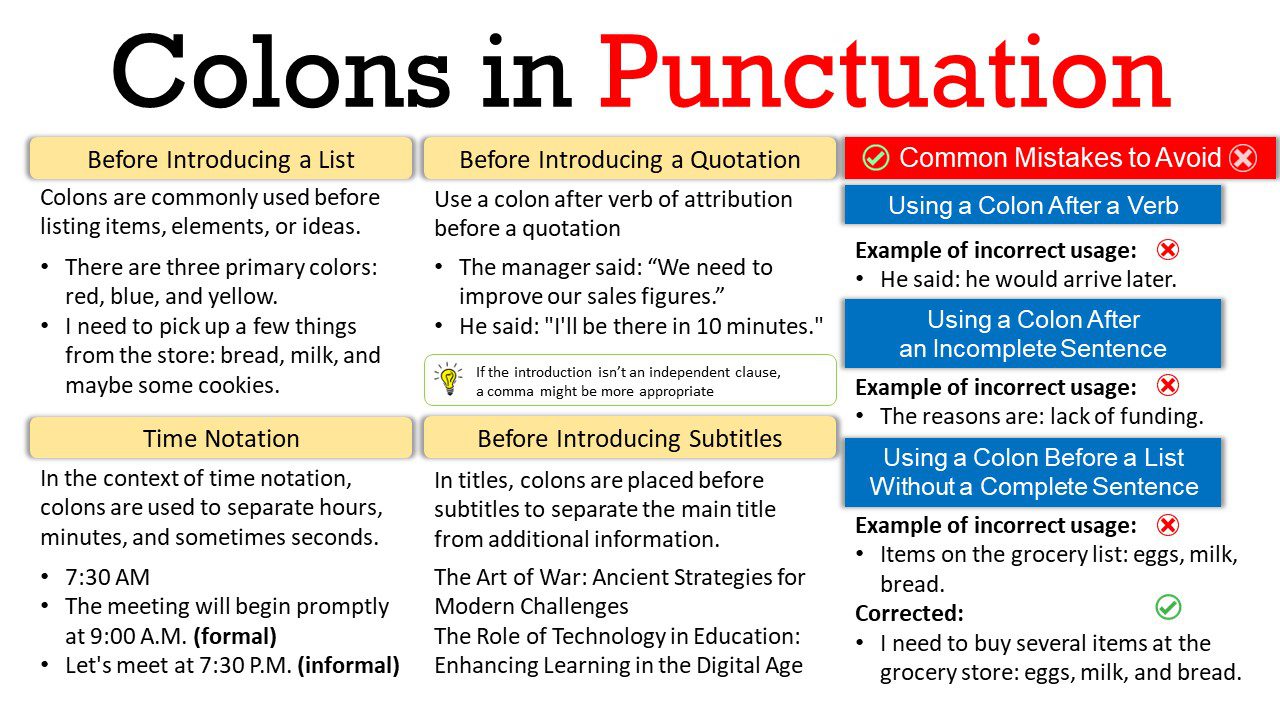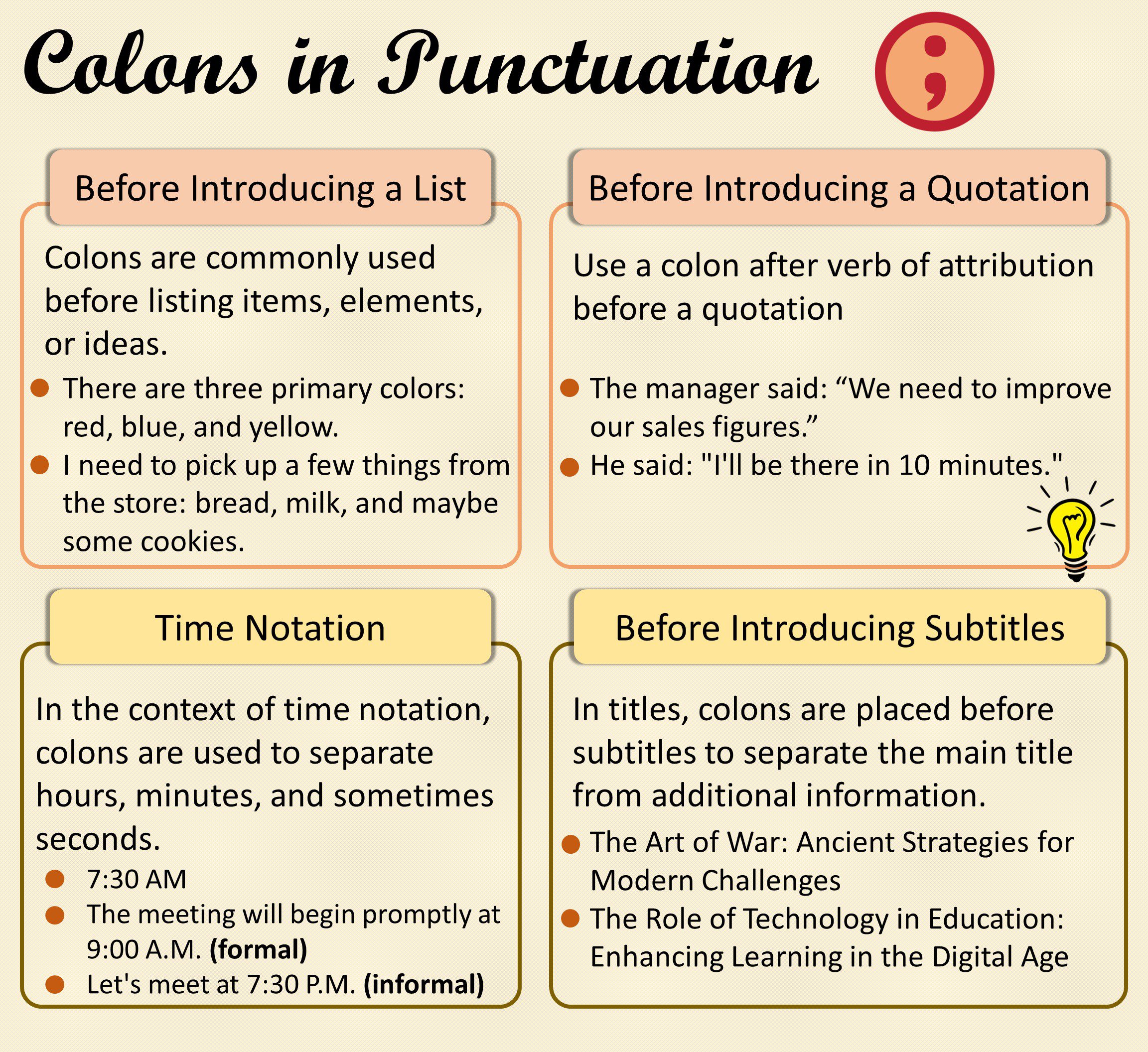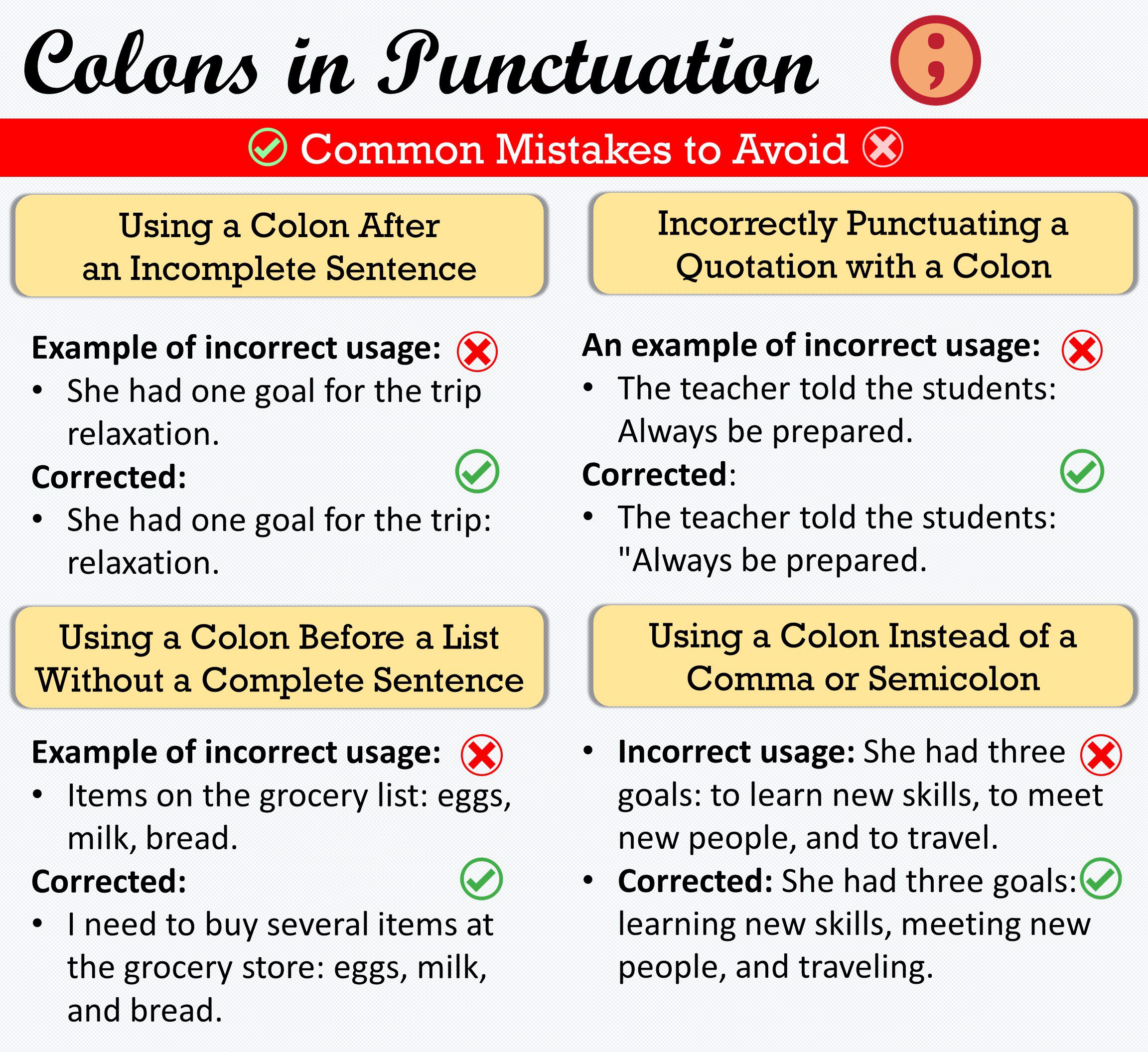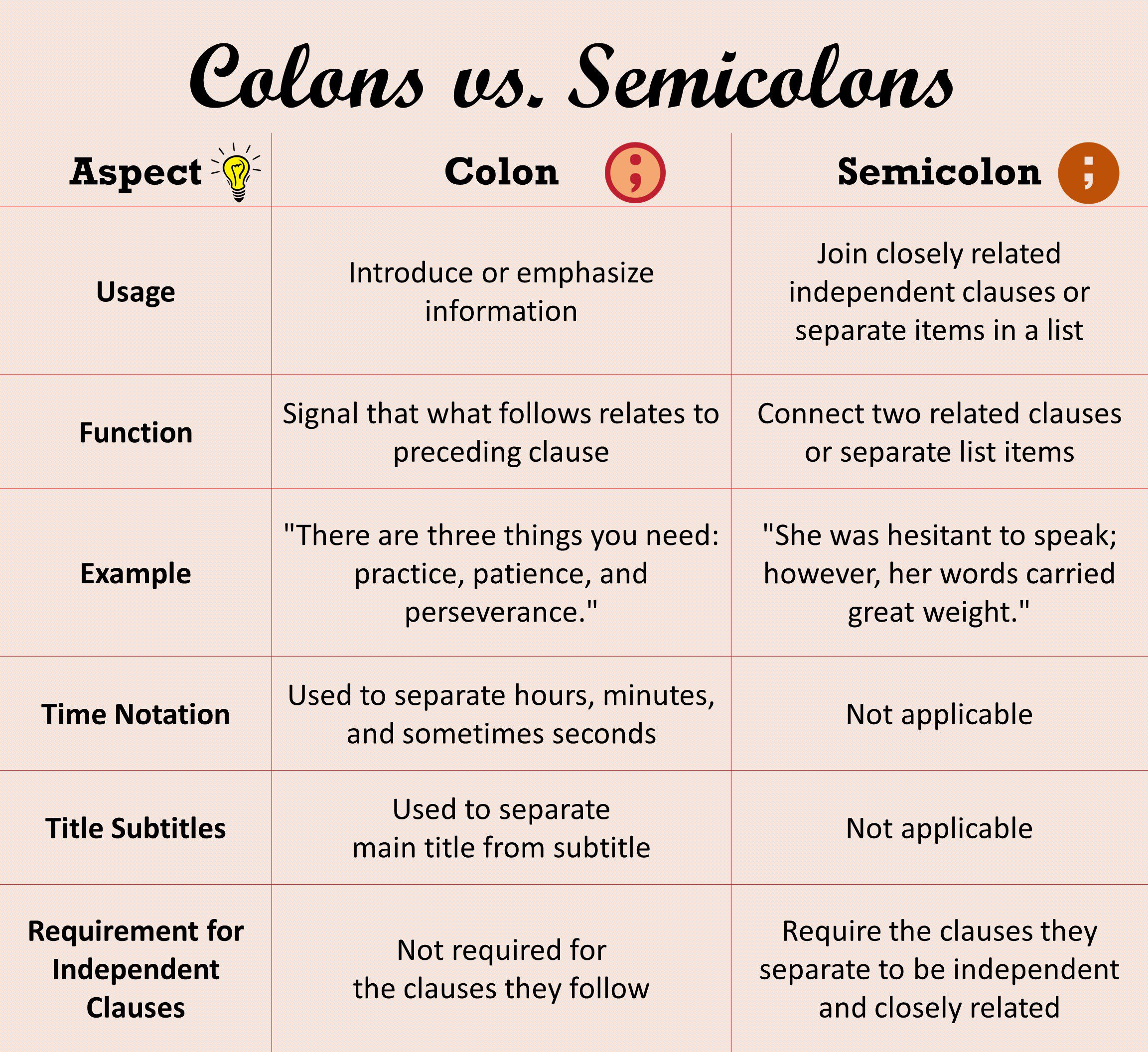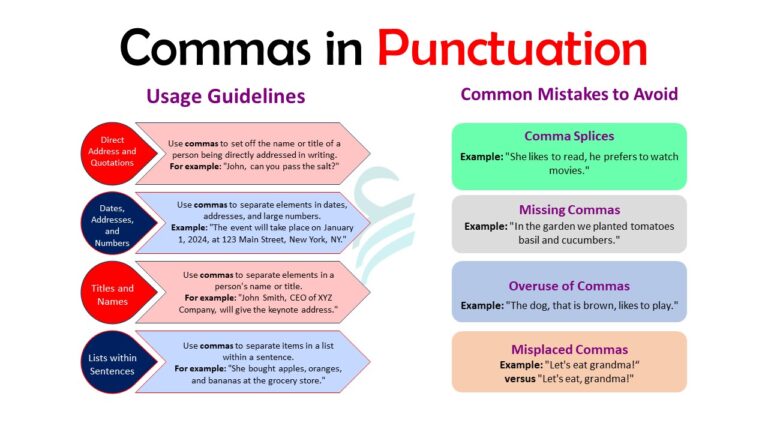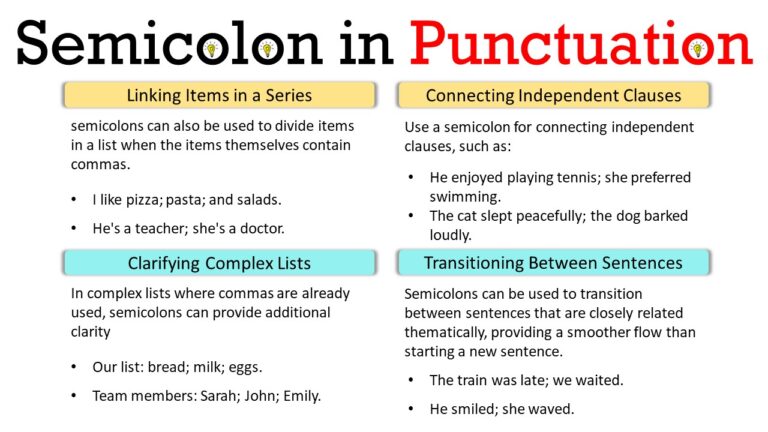Introduction to the Colon
The colon (:) is a punctuation mark with several important uses in written language. It is often misunderstood or misused, but when used correctly, it can enhance clarity and organization in your writing.
What is a Colon?
A colon (:) is a punctuation mark used primarily to introduce or emphasize the material that follows it.
Its primary purposes include:
- Introducing Lists
- Introducing Explanations or Examples
- Introducing Quotations
- Introducing Subtitles
- Time Notation
Read more about: Punctuation Marks
Uses of Colon
In English, colons are placed at the end of a clause or phrase, typically before introducing a list, explanation, example, or quotation. Here are some guidelines for colon placement and use:
1 – Before introducing a list
Colons are commonly used before listing items, elements, or ideas. The colon signals to the reader that a list is about to follow.
For example:
- There are three primary colors: red, blue, and yellow.
- The conference will cover three main topics: sustainability, innovation, and global trends. (formal)
- I need to pick up a few things from the store: bread, milk, and maybe some cookies. (informal)
2 – Before introducing an explanation or example
Colons can precede explanations, clarifications, or examples that elaborate on the preceding statement.
For example:
- The reason is simple: he didn’t study for the exam.
- She had one hobby she enjoyed most: painting.
- The company’s success can be attributed to one factor: a commitment to excellence in customer service. (formal)
- The party was a blast: lots of music, dancing, and laughter. (informal)
3 – Before introducing a quotation
Colons are often used before a direct quotation, especially in formal writing, to indicate that what follows is a quote or excerpt.
For example:
- The manager said: We need to improve our sales figures.
- The CEO emphasized the importance of teamwork: “Together, we can achieve our goals and drive success.” (formal)
- He said: “I’ll be there in 10 minutes.” (informal)
4 – Before introducing subtitles
In titles, colons are placed before subtitles to separate the main title from additional information.
For example:
- The Art of War: Ancient Strategies for Modern Challenges
- The Role of Technology in Education: Enhancing Learning in the Digital Age (formal)
- Cooking Adventures: Recipes from My Kitchen (informal)
5 – Time notation
In the context of time notation, colons are used to separate hours, minutes, and sometimes seconds.
For example:
- 7:30 AM (seven thirty in the morning)
- The meeting will begin promptly at 9:00 A.M. (formal)
- Let’s meet at 7:30 P.M. (informal)
It’s essential to remember that colons should be utilized carefully to improve the writing’s clarity and order rather than being inserted at random. Furthermore, depending on the style guide being followed, colons may or may not be followed by a single space after they are placed. Normally, they are not.
Read more about: Period or Full Stop
FAQs about Colon
1. What is a colon (:) used for in punctuation?
A colon (:) is used to introduce lists, explanations, examples, or to emphasize important points in a sentence. It can also be used in time expressions or after greetings in formal letters.
2. When should I use a colon before a list?
Use a colon before a list when it follows a complete sentence or independent clause. For example: “I need three things: paper, pencils, and markers.”
3. Can you use a colon after a verb or preposition?
No, a colon should not be used directly after a verb or preposition. For example, say: “I enjoy three activities: reading, writing, and swimming,” not “I enjoy: reading, writing, and swimming.”
4. How do I use a colon to introduce an explanation?
You can use a colon to introduce an explanation after a complete sentence. For example: “She was late for one reason: the bus broke down.”
5. Should the first word after a colon be capitalized?
If the word after the colon starts a complete sentence or is a proper noun, it should be capitalized. For example: “He had one wish: To travel the world.”
6. What are some common uses of a colon in writing?
A colon is commonly used to introduce lists, examples, and explanations, as well as in formal letters (e.g., “Dear Sir:”) and time expressions (e.g., “3:30 PM”).

